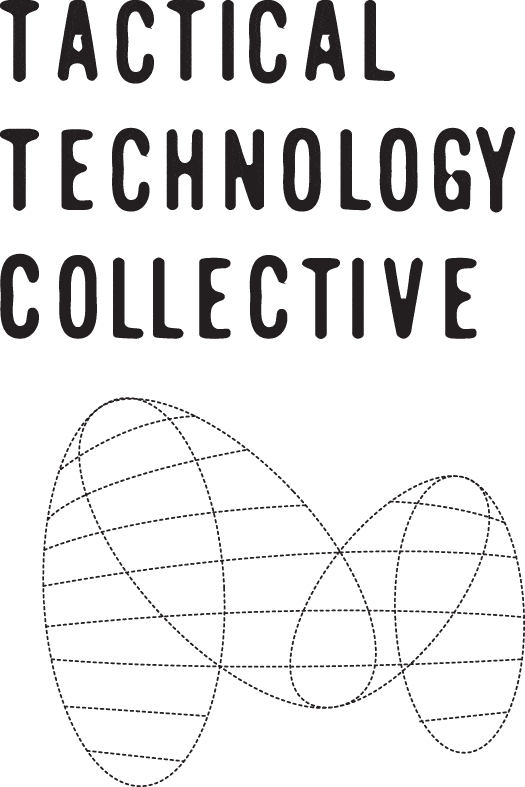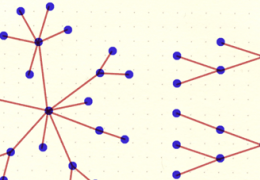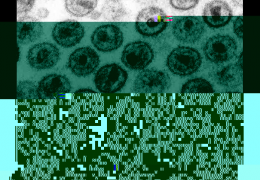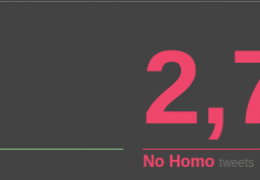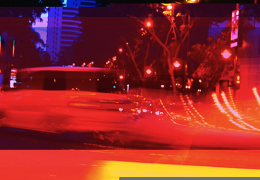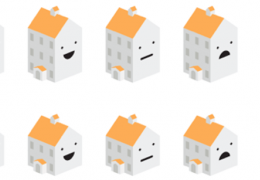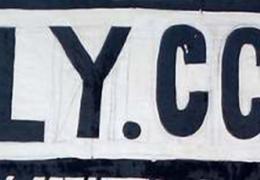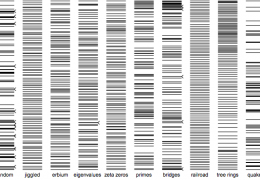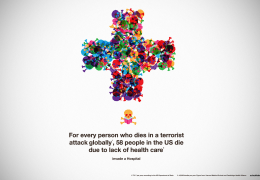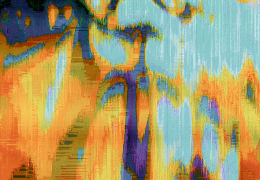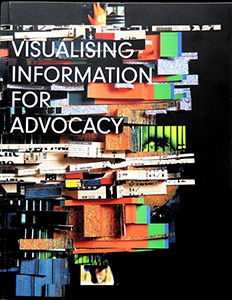By Gabi Sobliye, May 17 2015
In the coming months we will post a series of posts under the title Anatomy of a Data Visualisation where we intend to dissect visualisations that we think are either innovative or offer fresh insights into the world of visualising information for advocacy.
The first in this series is posted on International Day Against Homophobia, Transphobia and Biphobia as the visualisation in focus attempts to shift the casual use of homophobic language online. NoHomophobes launched in 2012 with the tagline “Homophobic language isn’t always meant to be hurtful, but how often do we use it without thinking?”
The website captures tweets in real time by scraping Twitter for mentions of four key words: “faggot"; “so gay”; “no homo”; and “dyke”. The interface features the number of times these words were mentioned on Twitter each day, week, or since the project’s inception. Below this tally of tweets, the viewer can read each tweet in real time and see who tweeted it, thus adding a contextual layer.
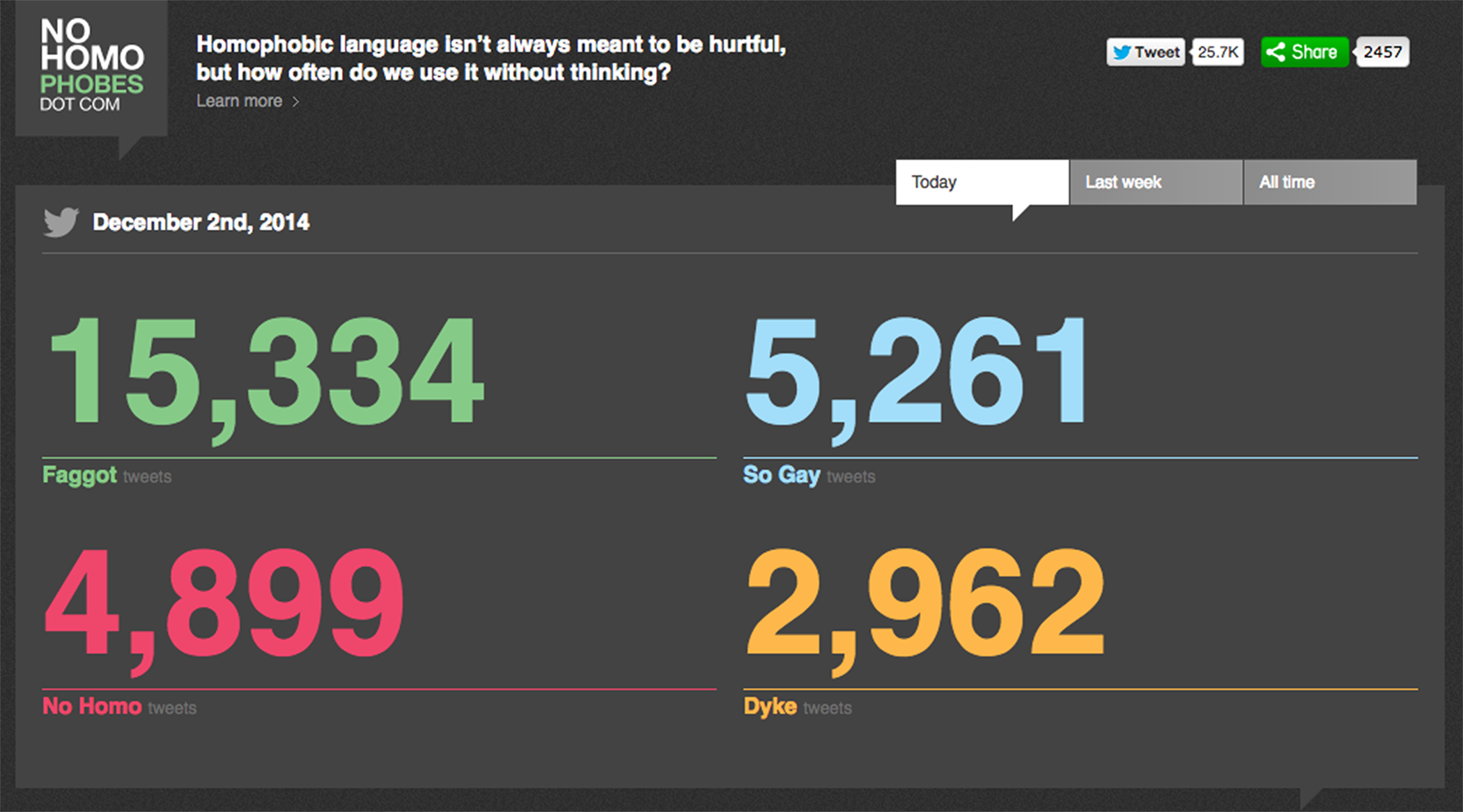
The site was conceptualised by the Institute of Sexual Minority Studies and Services at the University of Alberta in Canada and led by Dr. Kristopher Wells. Last year I interviewed Dr. Wells in preparation for a chapter written with my colleague Maya Ganesh on the challenges of visualising gender for a new book titled Diversity and Design: Hidden Consequences.
We were interested in talking with Dr. Wells as we often use this website during our visualisation workshops to demonstrate an innovative method of collecting and displaying qualitative data while at the same time keeping the target audience at the forefront of the campaign.
GO TO WHERE THE AUDIENCE IS
At the beginning of the project, Dr. Wells and his team thought about these casual homophobic statements as the most commonly heard phrases that were the least addressed. They started by identifying who they were trying to reach and how they would reach them. They focused on youth for whom these expressions had become shorthand for something “stupid” or “bad”. Dr. Wells explained how he tried to reach this demographic, “we went to where they are – social media. Aside from being a popular medium, social media is also a mirror that reflects casual homophobia in real time.”
The campaign is designed to encourage people to 'think before you tweet', but it has also larger implications. Framing the information in this way triggers users to consider their linguistic choices and see the scale of the problem. Dr. Wells said that this project was successful in “cutting through the noise, going where others are not in a bold, new, innovative way. This project might not change the language [people] use, but they are likely to never forget the gravitas of their words.”
CONTEXT MATTERS
The Institute of Sexual Minority Studies and Services was thoughtful over the four words they decided to track. There has been some criticism over the inclusion of ‘dyke’ amongst the four. This is due to the word dyke being reclaimed as a positive word by the community including events such as the annual Dyke March. To somewhat counter this, the website allows the viewer to see trends of the usage of these words over time and, for example, the user can see when the Dyke March was occurring and assess different contexts. Another level of criticism are the words that were not included, for example ‘tranny’, a derogative word referring to someone who identifies as transgender. The project initially tracked this word however it did not appear as much on twitter as other words so they decided not to include it as to avoid giving the impression that transphobia is not an issue on twitter.
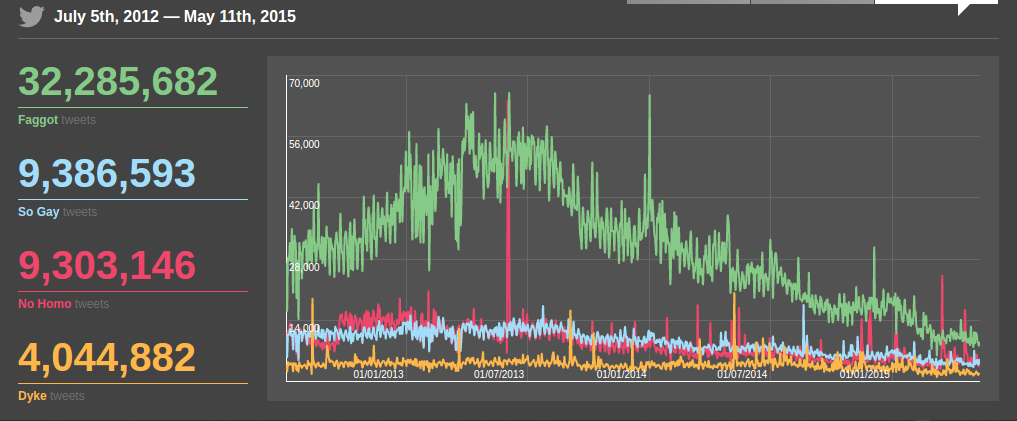
The project was not designed to “out” users of Twitter; the tweets, however, are linked to the real accounts so the public can engage the tweeters and begin a dialogue if they so choose. Dr. Wells stated that “giving viewers context was important to the project as context matters, and people can come up with their own conclusions.”
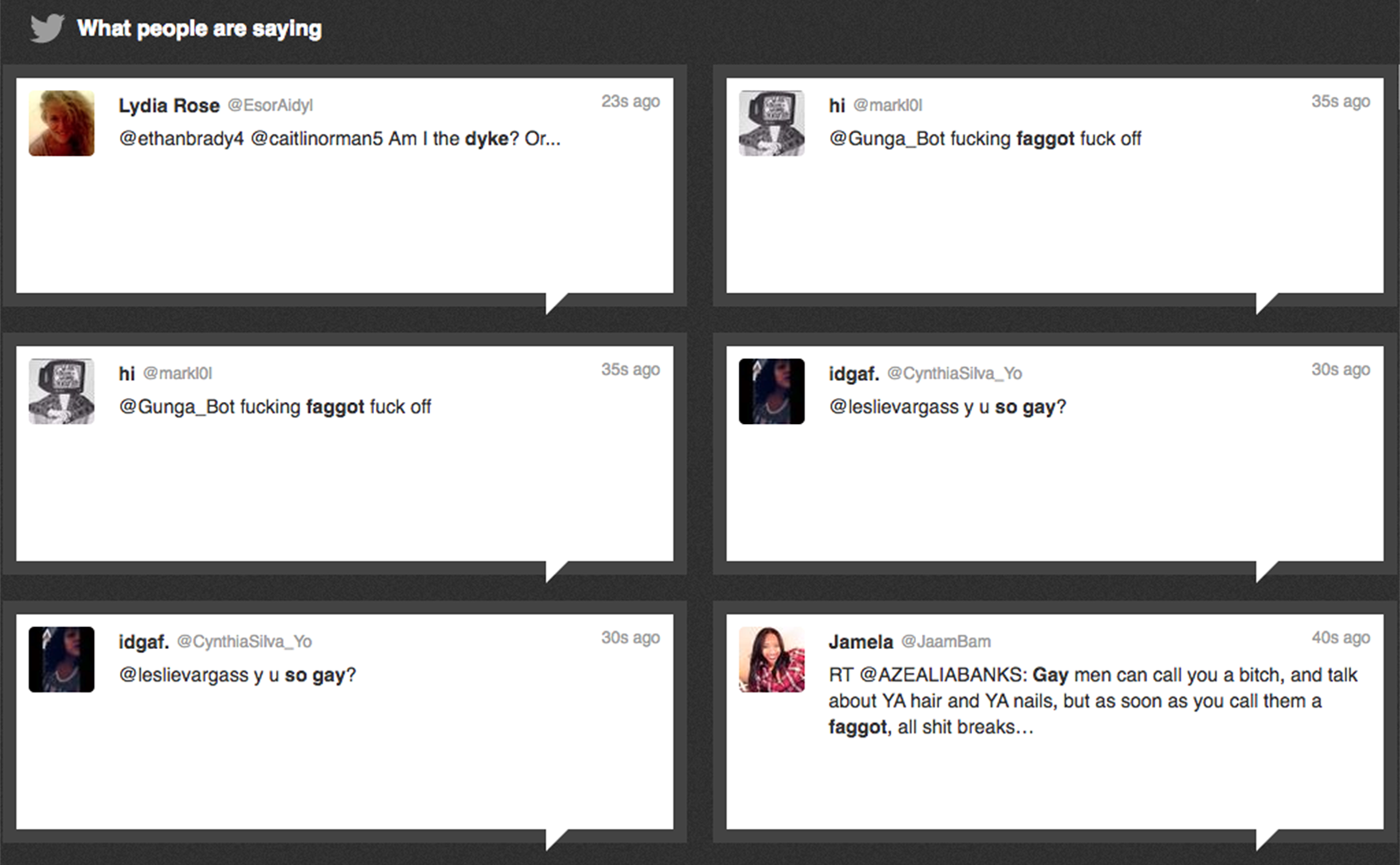
This project took a year to complete and was carried out (for free) by two highly skilled communication and digital agencies. The site has won various awards and captured the interest of global media outlets. Over the last two years, the site has received 1.7 million unique views, the most coming from the The Guardian and community-run sites like Reddit. Dr. Wells recognised that they “tapped into the global conscience at the right time.”
This website was a huge accomplishment for the University and Wells admitted this was a difficult, new terrain to tread but felt that the University was well placed and in a safe space in leading these larger public questions.
Gabi Sobliye works on the Exposing the Invisible project at Tactical Technology Collective. Many thanks to Dr. Kristopher Wells for his time and insights @kristopherwells.



